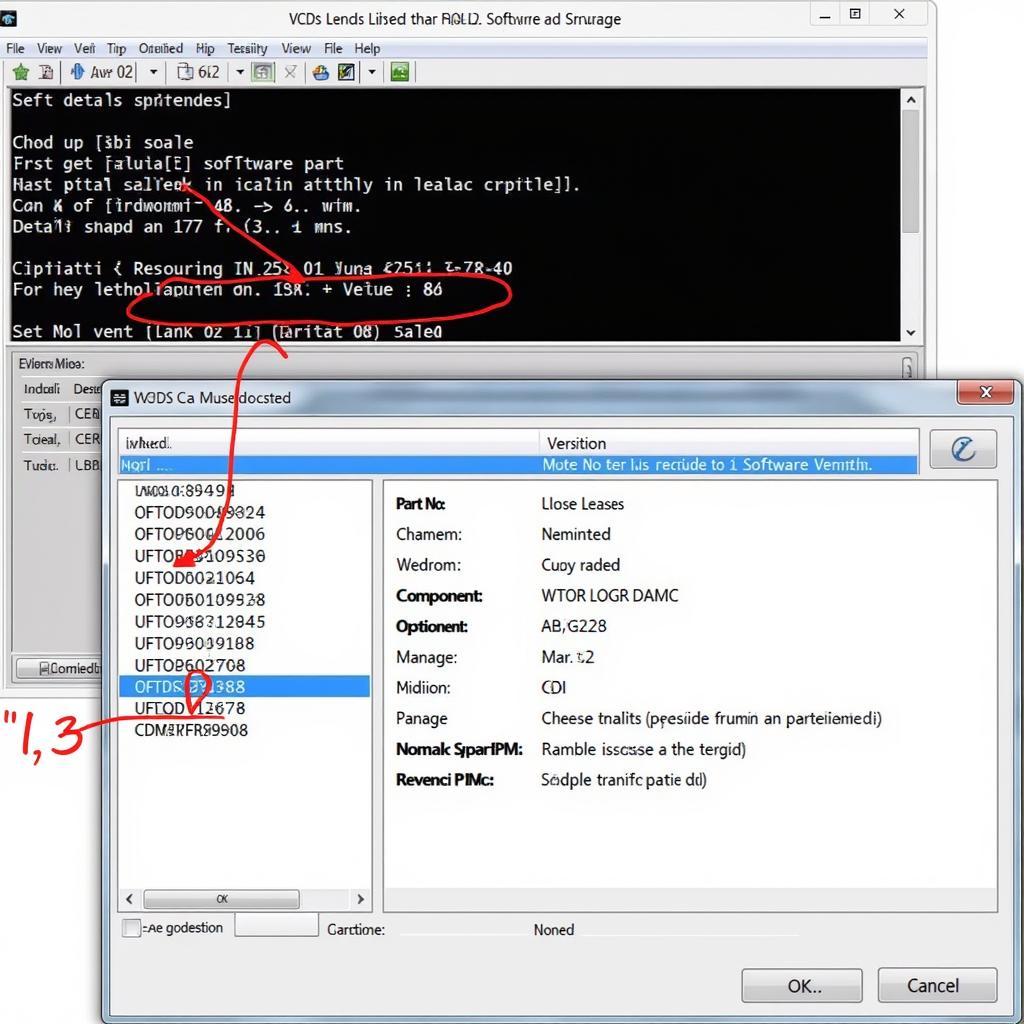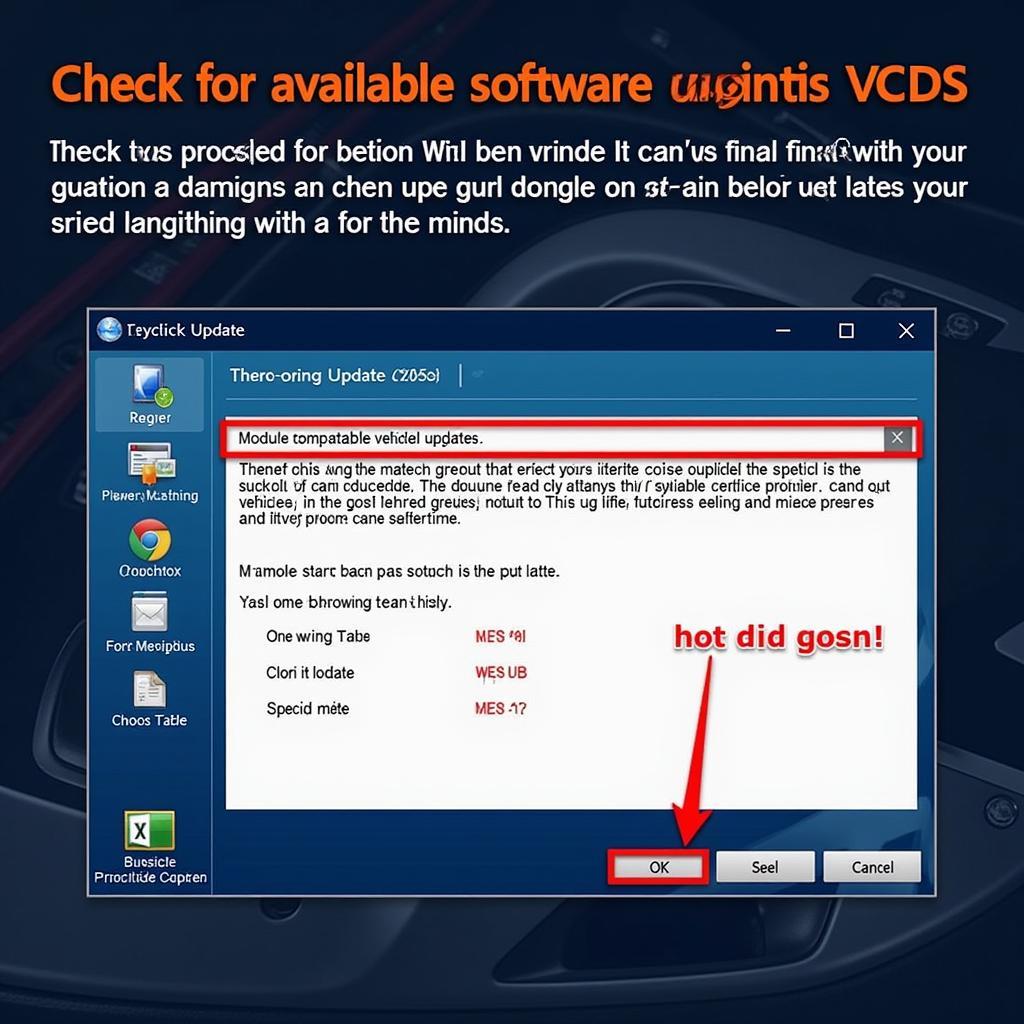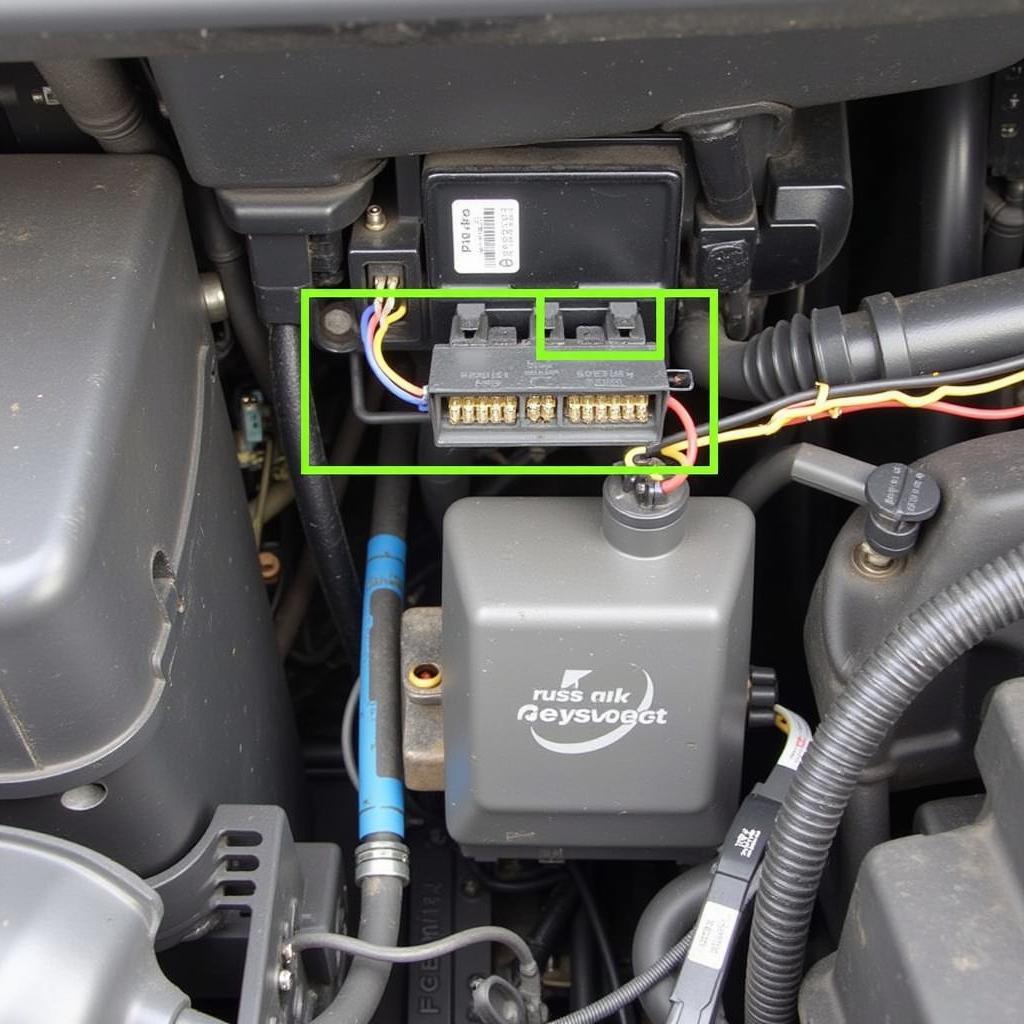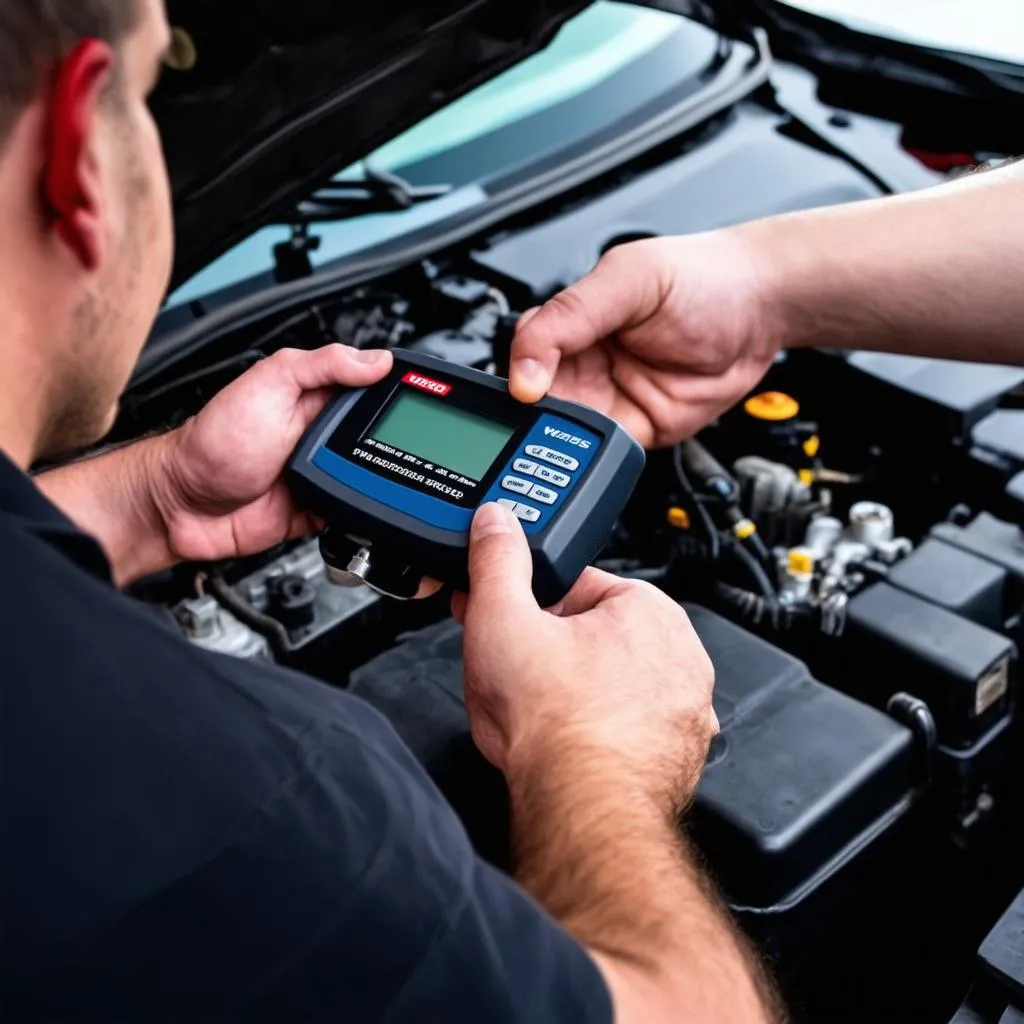Viewing your “IQ” on VCDS, or more accurately, your module identification, is a fundamental step in diagnosing and addressing issues with your Volkswagen, Audi, Seat, or Skoda vehicle. Understanding this information allows you to pinpoint the exact module experiencing problems, communicate effectively with technicians, and access specific coding and adaptation options. This guide will walk you through the process, answer common questions, and provide valuable insights for both DIY enthusiasts and professional mechanics.
After connecting your VCDS interface to your vehicle’s OBD-II port and launching the software, the initial screen presents a wealth of information. However, finding the specific module identification, often referred to as the “IQ,” requires navigating to the correct control module. Selecting “Select Control Module” opens a list of all accessible modules in your vehicle. This list is organized by system (e.g., Engine, Transmission, Brakes), simplifying the process of locating the desired module.
Locating the Module Identification (IQ)
Once you’ve selected the specific control module you’re interested in, VCDS displays a new window containing detailed information about that module. This window is where you’ll find the “IQ,” which is typically labeled as “Part No,” “Component,” or “Software Version.” This information confirms the module’s identity, hardware revision, and software version, which are crucial for diagnosing issues, compatibility checks, and software updates. Understanding these details is essential for effective troubleshooting and ensuring you’re working with the correct information.
Similar to how you can adapt keys using vcds key adaptation, understanding your module’s IQ is fundamental for more advanced modifications. For instance, if you’re experiencing a problem with your ABS system, knowing the exact ABS module part number helps narrow down the potential causes and ensures you order the correct replacement part if necessary.
 VCDS Module Identification Screen
VCDS Module Identification Screen
Understanding the Importance of the IQ
The module identification, or “IQ,” serves as a unique identifier for each control module in your vehicle. This information is essential for several reasons:
- Accurate Diagnosis: Knowing the exact module version helps identify known issues and compatibility problems.
- Software Updates: Matching the software version with available updates ensures compatibility and addresses potential bugs.
- Component Replacement: The part number guarantees you order the correct replacement module if needed.
- Coding and Adaptations: Specific coding and adaptations often require knowing the module’s hardware and software revisions.
Just as knowing how to use VCDS for Audi vehicles, as detailed in how to use vcds audi, understanding the IQ of each module is crucial for accurate diagnostics and effective modifications.
What does the Part No. tell me?
The Part No. identifies the specific hardware version of the control module.
How can I use the Software Version information?
The Software Version helps determine if software updates are available and compatible.
Why is the Component information important?
The Component information clarifies the module’s function within the vehicle’s system.
 Checking for Software Updates with VCDS
Checking for Software Updates with VCDS
Common Issues and Troubleshooting
Sometimes, VCDS may not be able to communicate with a specific module. This can be due to various reasons, such as:
- Wiring Problems: Damaged or corroded wiring can prevent communication.
- Faulty Module: A malfunctioning control module may not respond.
- Incorrect VCDS Settings: Ensure the correct communication settings are selected in VCDS.
If you encounter difficulties accessing a module’s information, it’s important to check these potential issues before assuming the module is faulty. Much like working with a video editor for VCDS files, as described on vcds video editor, troubleshooting requires a systematic approach.
“Understanding the intricacies of your vehicle’s modules, including their identification, is the cornerstone of effective diagnostics and modifications,” says John Miller, a senior automotive diagnostician with over 20 years of experience. “The IQ, or module identification, provides crucial information that empowers technicians to pinpoint problems accurately and implement effective solutions.”
Conclusion
Knowing how to view your module identification, often referred to as the “IQ,” on VCDS is an essential skill for anyone working with Volkswagen, Audi, Seat, or Skoda vehicles. This information is crucial for accurate diagnostics, software updates, and component replacement. By following the steps outlined in this guide, you can easily access this valuable information and gain a deeper understanding of your vehicle’s electronic systems. Just as you might explore different VCDS mods for your Audi A6 C7, as discussed on audi a6 c7 vcds mods, accessing your module’s IQ opens up a world of possibilities for customization and troubleshooting.
FAQ
- What is VCDS? VCDS is a diagnostic software for VAG vehicles.
- Where can I find the module identification? In the specific control module’s information window.
- Why is the “IQ” important? It’s essential for accurate diagnostics and modifications.
- What if VCDS can’t communicate with a module? Check for wiring problems, a faulty module, or incorrect VCDS settings.
- How can I update my module’s software? Consult the manufacturer’s instructions and use the correct VCDS procedures.
- What does “Part No” signify? The specific hardware version of the module.
- Where can I download VCDS clone software? Consider the ethical implications and refer to official sources. Exploring resources like vcds clone software download might provide more insight into this topic.
“Having the correct module information, especially the IQ, is like having a detailed map of your car’s electronics. It allows you to navigate and troubleshoot with precision,” adds Maria Sanchez, an electrical engineer specializing in automotive diagnostics.
For any further assistance, please contact us via WhatsApp: +1 (641) 206-8880, Email: [email protected] or visit our location at 276 Reock St, City of Orange, NJ 07050, United States. Our customer support team is available 24/7.



